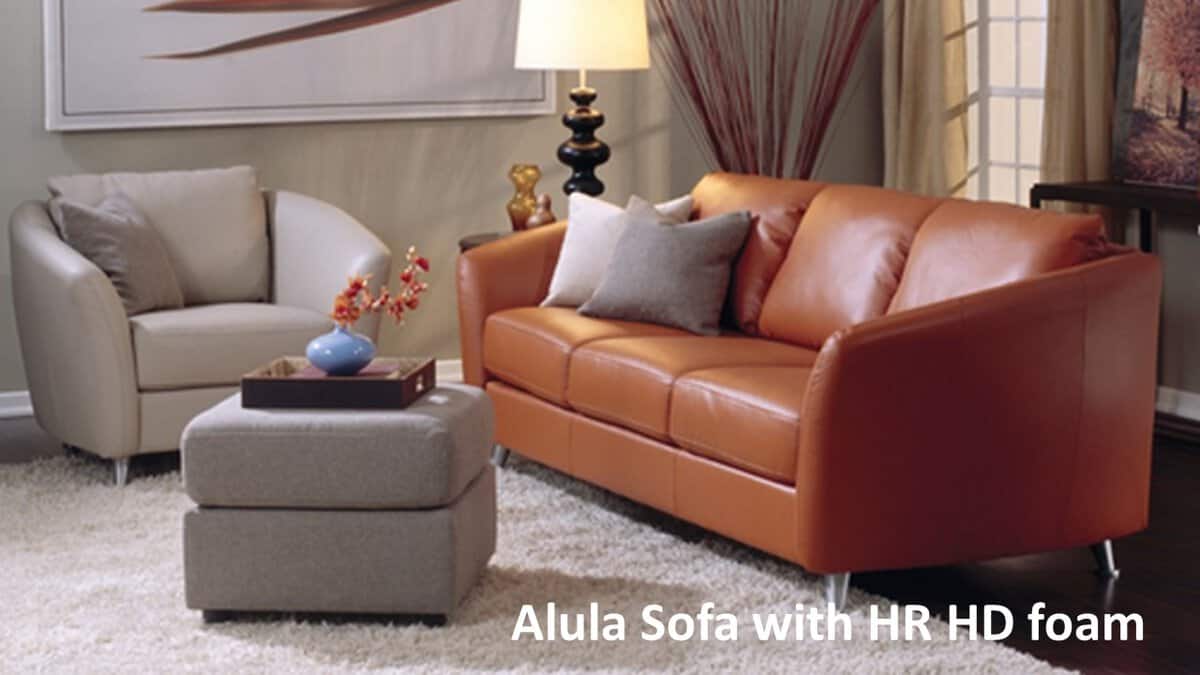When furnishing your home in Mexico, a large chunk of your budget will go towards your sofa or sectional. That’s why it is essential to find out about the item’s construction and materials. Although the style is what catches our eye, it is the cover, frame, springs and filling that will determine if your sofa lasts two years or twenty.
In previous columns, we have reviewed the best covers, frames, and springs available for our humid, tropical environment.
To me, there is a clear winner of which cover to get. The new performance fabrics that repel liquids and oils are hands-down the best option. With hundreds of colors and soft weaves from which to choose, this cover will give you maximum return on your investment.
Frames and springs are also crucial to long-lasting sofas and sectionals. The quality of the materials and manufacturing will have a direct impact on the longevity of your piece. A good manufacturer will proudly share info on their website and with their salespeople and customers about their commitment to quality. Make sure to investigate this before you purchase. A company that offers and stands behind its warranty is another great sign you are buying right the first time.
The final component of any upholstered item is the filling. The filling or padding of your sofa and sectional is what makes it comfortable to sit on.
Options available for filling include foam, down/feathers, polyester, and batting. In this article, I will cover pros and cons of foam and down/feathers. Next week, I will cover polyester and batting.
The most commonly used filling is foam. Foam is available in a variety of densities. Generally, the higher the density, the harder it will feel. Although a lower density foam will feel softer, it will degrade quicker. If buying a sofa or sectional with a foam filling, go for foam that is labeled high resiliency (HR). HR of approximately 1.8 lbs provides great resiliency and is available in both high and low density so that you can select the firmness you prefer. Another plus, HR is environmentally friendly.
Love to sink into your sofa? Down or feather filling is a great option, although it is more expensive than foam. At the low end of the cost scale are duck and chicken feathers; goose down is more expensive. Well-made casings are very important because they keep feathers and down from coming out. Waterproof casings are best. In the event of spills and because of our humid environment, waterproof casings keep the filling from getting wet. A downside of down is that it tends to get lumpy. If you do go this route, the casings should separate the goose down into small baffles.
In harsh humid climates and when your furniture is going to
be used a lot, it is important to ensure you get a filling that is going to
wear well. Last week we covered two
types of filling or padding for sofas and sectionals – down/feather filling and
foam. This week, we will cover two
other common types.
Polyester, also referred to as polyfoam, is found in
low-cost upholstered pieces. It is
generally the lowest cost filling available.
It has been around since the 1960’s.
Polyfoam is made using the same process that is used in making petroleum
from crude oil. Unfortunately, with the
lower price also comes some downsides. The
first is its questionable safety. The US
Environmental Protection Agency (EPA) consider facilities that manufacture
polyfoam potential sources of harmful pollutants. According to studies, when polyfoam breaks
down, it can be released in to the air as microscopic particles. These particles which could be inhaled have
the potential to cause health issues.
Polyfoam tends to flatten out very quickly resulting in
lumpy cushions. It is also very
porous. In our humid climates, any
material that holds moisture runs a higher risk of mildew and mold. Another downside is that it is extremely
flammable. Firefighters refer to
polyfoam as solid gasoline. Unless it is
treated, it will burn very hot and very fast.
When it does so, the resultant fumes are toxic. Just one breath of super hot toxic gas would
incapacity an average sized human. Fire
retardant polyfoams still carry some potential risk due to the type of coatings
used.
Batting, commonly made from wool, cotton and polyester is
used to wrap foam. Batting keeps
everything smooth and prevents the cover from slipping. The cheaper the batting, the more problems
you will have. 100% cotton batting tends
to poke through the sofa cover so it is not recommended for seat cushions. Poly cotton blends work much better. Wool batting is best used to cover sofa springs,
but not generally used as a cushion.
Newest to the scene is foam made from soy beans. Manufacturers claim it to be a great
alternative option since it is a renewable resource and it further reduces our
dependence on fossil fuels. Since it is
so new, there are a lot of unknowns.
Whether it is healthier for us and the environment is still up for
discussion and debate. Today, very few
upholstery manufacturers use soy foam but we can expect this to most likely
grow in future years.
When you purchase an inexpensive sofa, its poor quality
materials means it will collapse quicker, and pose potential health and
environmental issues. The average
lifespan for an inexpensive sofa made from lower grade materials is 2 to 3
years. Investing in a well made item,
with quality materials should give a life span of 20 to 25 years. And a lot more comfort!

